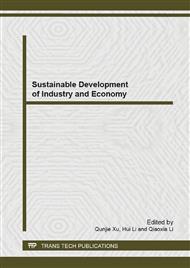p.189
p.193
p.201
p.205
p.209
p.213
p.218
p.226
p.230
Identification of the Spatial Distribution of Physiologically Equivalent Temperatures in a Residential Garden Using Geostatistics
Abstract:
This research evaluates the spatial distribution of thermal comfort in residential gardens using geostatistics; a residential garden in Taichung City was studied. The monitoring sites were systematically equipped to record the physical environment factors used to monitor and calculate the Physiologically Equivalent Temperature (PET), which was used to estimate the spatial distribution according to the Kriging Method. The research findings showed that users perceived comfort or slight warmth in the studied region, and the spatial distribution of the PET appeared at diverse times and spatial variability characteristics. In other words, the users perceived comfort at distinct locations in different time periods. At noon (11 am - 2 pm), the right and left side areas of the garden were considered to be more comfortable, while the right area was perceived as more comfortable in the afternoon (2 pm - 5 pm), the times in which sunshine and shadow were considered to be the major factors. The research results also show that waterscapes and plants could reduce the temperature and enhance thermal comfort in the garden.
Info:
Periodical:
Pages:
209-212
Citation:
Online since:
December 2013
Authors:
Price:
Сopyright:
© 2014 Trans Tech Publications Ltd. All Rights Reserved
Share:
Citation:


